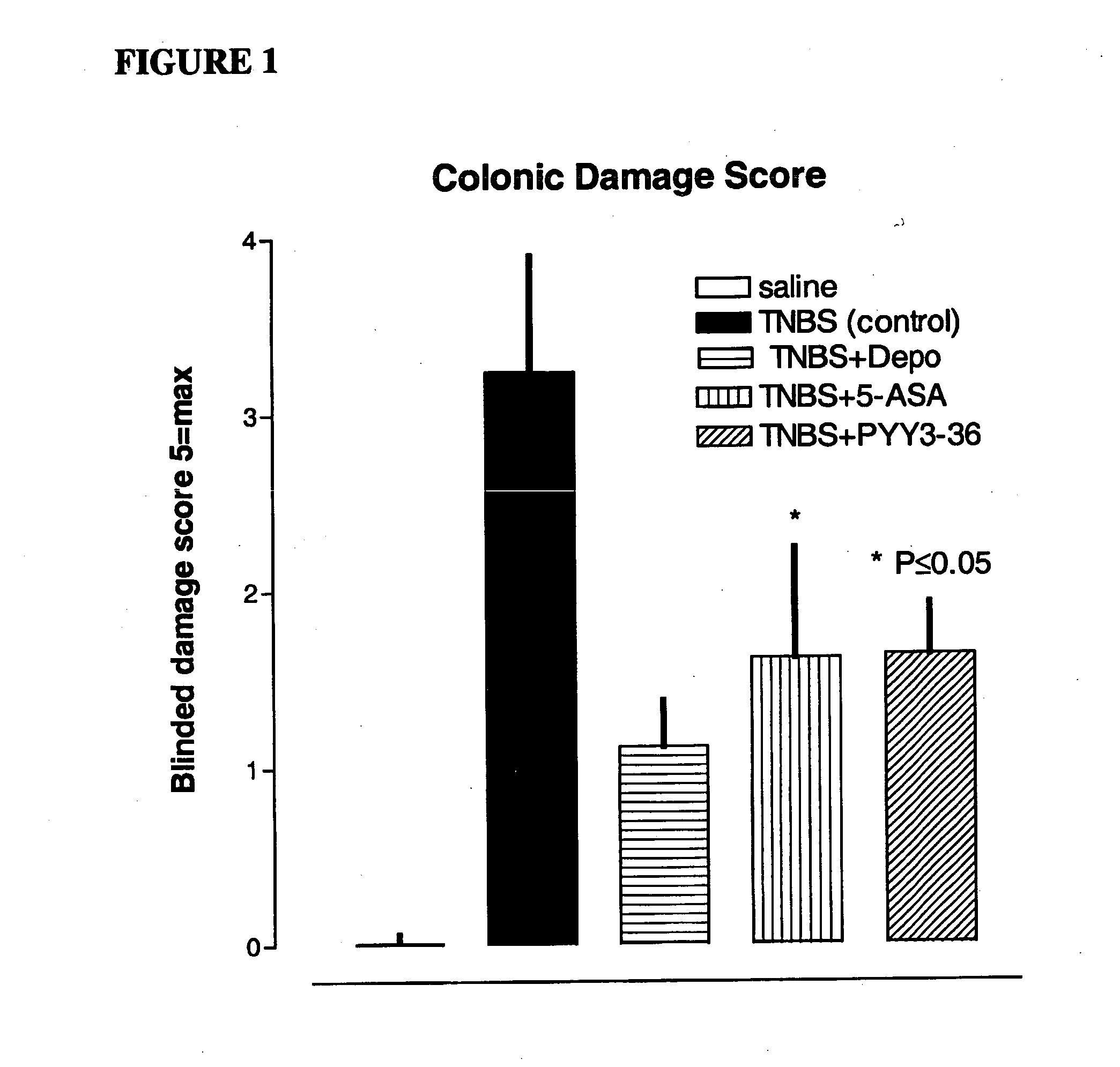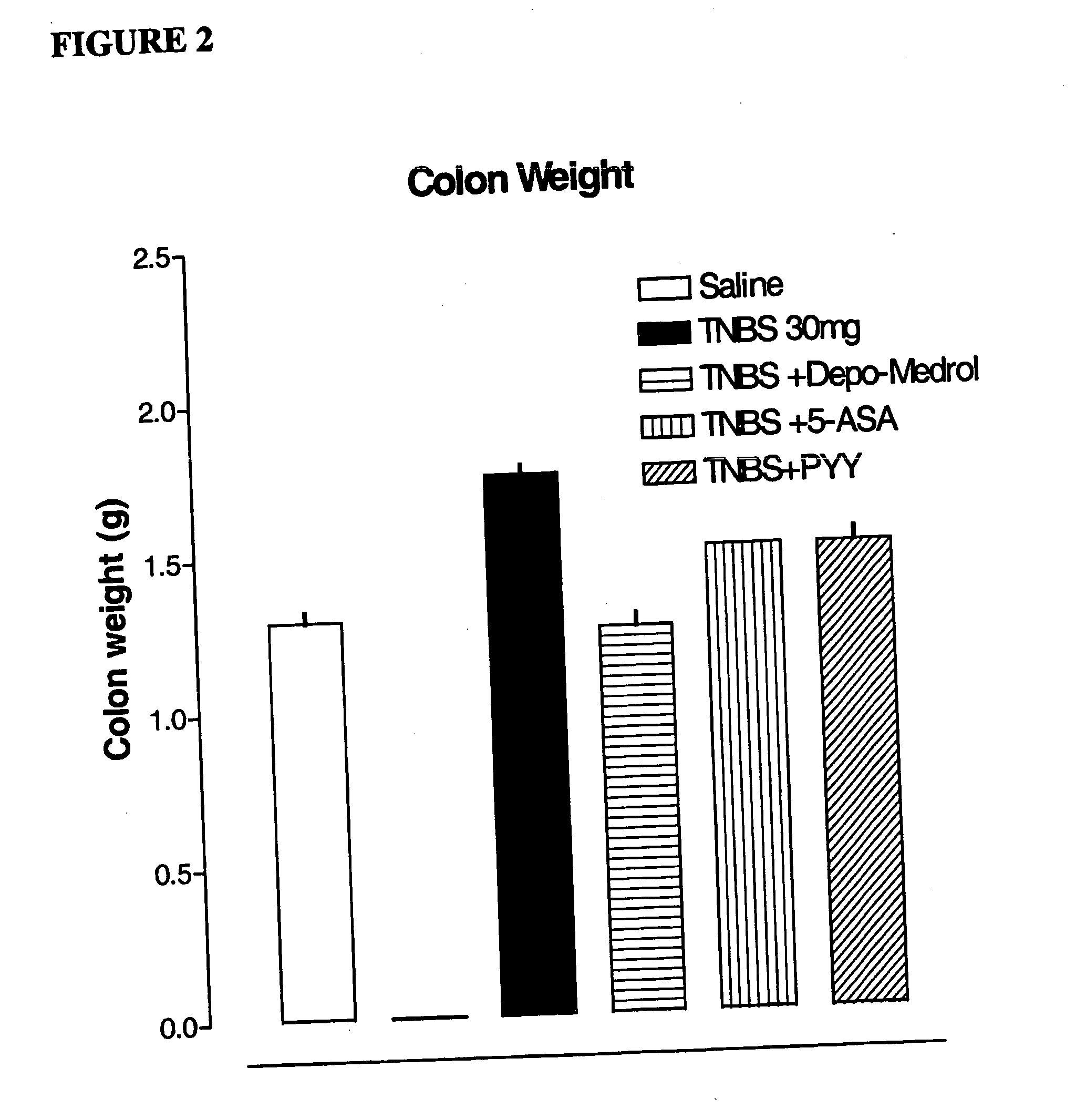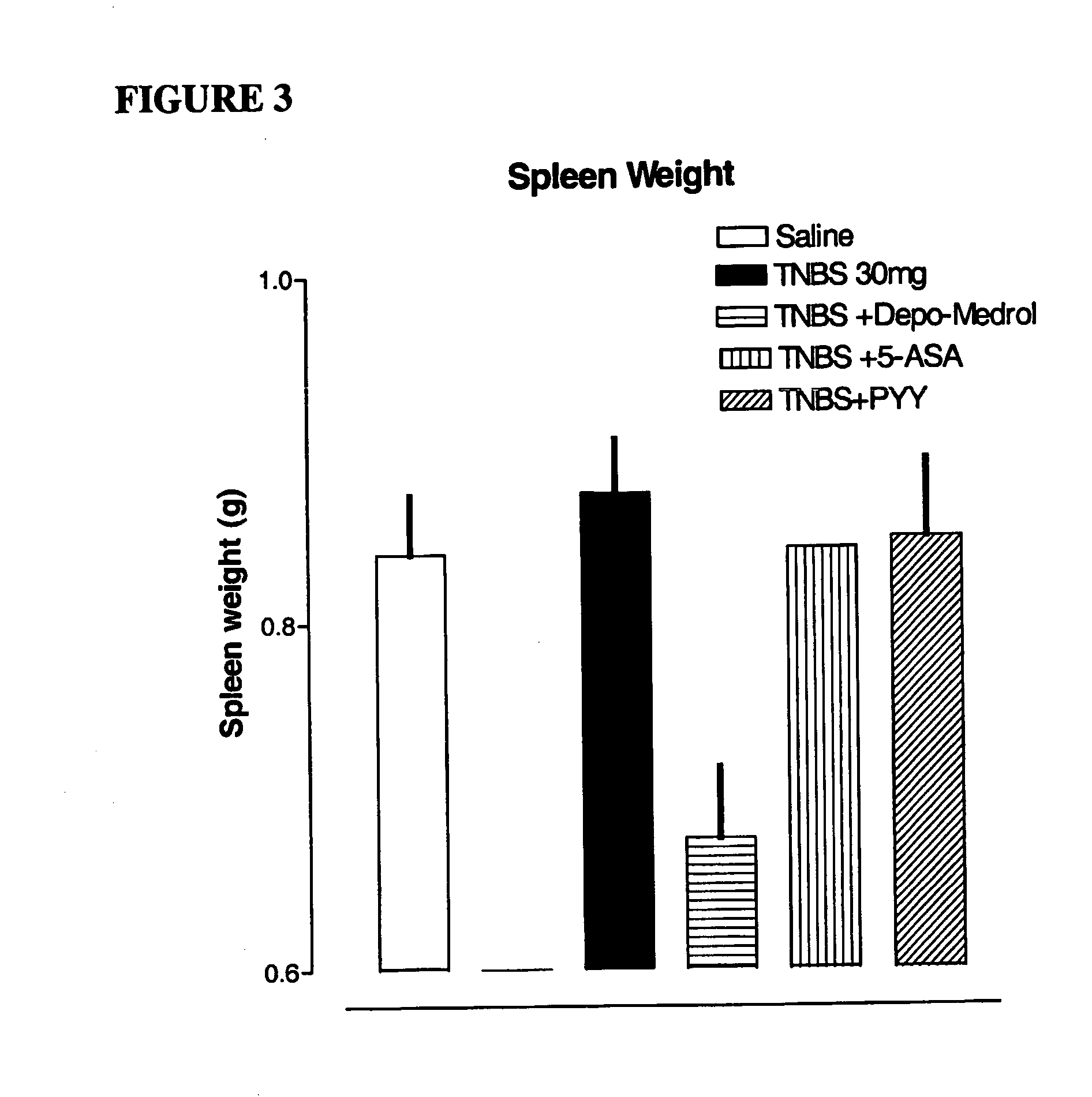Prevention and/or treatment of inflammatory bowel disease using pyy or agonists thereof
a technology of inflammatory bowel disease and agonists, which is applied in the field of ulcerative colitis, can solve the problems of increased mortality risk, increased risk of cancer, and debilitating diseases, and achieve the effects of slow gastric emptying and small intestinal motility, reduced mortality risk, and reduced mortality
- Summary
- Abstract
- Description
- Claims
- Application Information
AI Technical Summary
Benefits of technology
Problems solved by technology
Method used
Image
Examples
example 1
Reduction of Colon Injury of Animal Model for Inflammatory Bowel Disease Using PYY[3-36]
Methods
[0050] Animal preparation: 10-11 weeks old male HSD rats, ranging 250-300 grams, were housed in a 12:12 light:dark cycle, and allowed ad libitum access to a standard rodent diet (Teklad L M 485, Madison, Wis.) and water. The animals were fasted for 24 hours before the experiment.
[0051] Procedure: A simple and reproducible rat model of chronic colonic inflammation has been previously described by Morris G P, et al., “Hapten-induced model of chronic inflammation and ulceration in the rat colon.”Gastroenterology. 1989; 96:795-803. It exhibits a relatively long duration of inflammation and ulceration, affording an opportunity to study the pathophysiology of colonic inflammatory disease in a specifically controlled fashion, and to evaluate new treatments potentially applicable to inflammatory bowel disease in humans.
[0052] Rats were anesthetized with 3% isofluorane and placed on a regulated...
example 2
Other PYY Agonist and Analogs
[0064] Although the example above used PYY[3-36], it is contemplated that other PYY agonists may also be used. Examples of other PYY agonists are disclosed in the literature, including U.S. Pat. Nos. 5,604,203, 5,912,227, 5,916,869, 6,017,879, WO 03 / 026591, all of which are hereby incorporated by reference as if fully set forth herein.
[0065] Other PYY agonists may also be obtained by methods known in the art. For example, methods for determining peptide three-dimensional structure and analogs thereto are known, and are sometimes referred to as “rational drug design techniques.” See, e.g., U.S. Pat. No. 4,833,092 to Geysen; U.S. Pat. No. 4,859,765 to Nestor; U.S. Pat. No. 4,853,871 to Pantoliano; U.S. Pat. No. 4,863,857 to Blalock; see also Waldrop, Science 247, 28029 (1990); Rossmann, Nature 333, 392 (1988); Weis et al., Nature 333, 426 (1988); James et al., Science 260, 1937 (1993) (development of benzodiazepine peptidomimetic compounds based on the s...
example 3
Area Postrema Assay for Identifying Pyy Agonist
[0071] Peripherally administered PYY has been reported to activate neurons in the area postrema (Bonaz, Taylor et al. Neurosci Lett 163: 77-80, 1993). Evaluation of the PYY agonist activity of potential compounds of the invention can be carried out using the area postrema assay as follows, in combination with an assay of PYY effect in protecting the intestines from damage according to the methods set forth in Example 1.
Membrane Preparation
[0072] In this assay, area postrema membranes were prepared from tissue dissected from the pig or bovine brain stem. Area postrema membrane preparations are initiated by brief (4-10 seconds) homogenization of tissues using, e.g., a Polytron tissue homogenizer (Brinkman Instruments, N.Y.) at ice-cold temperatures in a buffered solution such as phosphate buffered saline (138 mM NaCl, 8.1 mM Na2PO4, 2.5 mM KCl, 1.2 mM KH2PO4, 0.9 mM CaCl2, 0.5 mM MgCl2, pH 7.4). Following tissue disruption, large part...
PUM
| Property | Measurement | Unit |
|---|---|---|
| length | aaaaa | aaaaa |
| pH | aaaaa | aaaaa |
| compositions | aaaaa | aaaaa |
Abstract
Description
Claims
Application Information
 Login to View More
Login to View More - R&D
- Intellectual Property
- Life Sciences
- Materials
- Tech Scout
- Unparalleled Data Quality
- Higher Quality Content
- 60% Fewer Hallucinations
Browse by: Latest US Patents, China's latest patents, Technical Efficacy Thesaurus, Application Domain, Technology Topic, Popular Technical Reports.
© 2025 PatSnap. All rights reserved.Legal|Privacy policy|Modern Slavery Act Transparency Statement|Sitemap|About US| Contact US: help@patsnap.com



